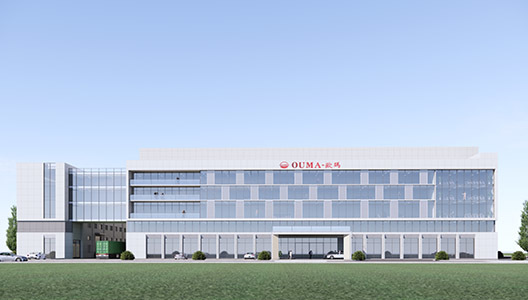Q&A about common issues with diesel generator sets
Nov 25,2024
What are the conditions for two generator sets to operate in parallel, and what devices are used to complete the parallel operation?
1. What are the conditions for two generator sets to operate in parallel and what device is used to complete the parallel operation?
Answer: The conditions for parallel operation are that the voltage, frequency, and phase of the two machines must be the same at the moment. This is commonly referred to as 'three simultaneities' in generator sets. A dedicated parallel operation device is used to complete the parallel work. It is generally recommended to use a fully automatic parallel cabinet and to avoid manual parallel operation as much as possible. The success or failure of manual parallel operation depends on human experience. Based on over 20 years of experience in the power industry, I boldly state that the reliable success rate of manual parallel operation for diesel generators is zero. One cannot apply the concept of manual parallel operation from large power supply systems to small power supply systems, as their protection levels are completely different.
2. What are the reasons that can cause high water temperature alarms leading to shutdown and making it unusable?
Answer: Water tank leakage or insufficient water volume; damaged water temperature sensor; excessive dirt in the water tank or too much oil on the radiator fins;
Excessive wear on fan belts leading to insufficient pressure; pump wear leading to insufficient water flow; thermostat opening angle not sufficient, with possible jamming; cylinder head gasket failure causing water passage to connect with the cylinder; excessive wear on cylinder liners leading to localized water seepage; inadequate ventilation in the engine room; engine overload operation (including engine fatigue) with excessive fuel supply.
3. Why must the generator (electric ball) working chamber be kept clean?
Answer: If a diesel engine inhales dirty air, it will cause a decrease in power; if a generator inhales sand, dust, and other impurities, it will damage the insulation between the stator and rotor gaps, potentially leading to burnout.
4. What level of energy does electrical energy belong to? What are the characteristics of alternating current?
Answer: Electrical energy belongs to secondary energy. Alternating current is converted from mechanical energy, while direct current is converted from chemical energy. The characteristic of alternating current is that it cannot be stored.
5. Why does a diesel engine emit black smoke?
Answer: A diesel engine easily emits black smoke under high load conditions. The natural process of black smoke generation is not yet fully understood, but it is generally believed that when a diesel engine is under high load, more fuel is injected into the combustion chamber, and with higher temperatures in the combustion chamber combined with the characteristic of uneven mixture formation in diesel engines, this can lead to insufficient air combustion in certain areas of the combustion chamber. Under high temperature and oxygen-deficient conditions, fuel decomposes and polymerizes into soot (carbon black). Soot is not pure carbon but a polymeric substance primarily composed of carbon (over 85%), along with small amounts of oxygen, hydrogen, and ash, with its composition varying depending on the load of the diesel engine. When black smoke is collected through a filter and observed under an electron microscope, large soot particles can be seen with diameters around 0.05mm. The high-temperature pyrolysis reaction occurring in diesel engines is unavoidable, especially in spatially mixed combustion diesel engines where high-temperature gases surround liquid oil droplets, creating optimal conditions for pyrolysis reactions. High-speed photography of the combustion process confirms that large amounts of black smoke appear around the top dead center; however, under normal circumstances, soot can find air during subsequent combustion and burn completely, resulting in no black smoke emissions. However, if there is insufficient air in the cylinder and the mixing process is slow, then due to expansion causing a drop in cylinder temperature, carbon cannot burn and instead aggregates into soot. The formation of soot leads to incomplete combustion, decreased economic efficiency of the diesel engine, increased exhaust temperature, black smoke emissions from exhausts, carbon buildup on combustion chamber surfaces, and prevents further load advancement. Carbon buildup can also cause piston rings or pistons to seize and valve sticking failures. Therefore, it is not permissible for a diesel engine to operate under prolonged overload conditions.
6. Why is there water in the fuel tank and how can it be prevented?
Answer: Qualified fuel should not contain impurities or moisture when leaving the factory; however, during transportation and storage processes, dust, dirt, and moisture may mix in; when the fuel tank is not full, moisture in the air inside the tank can easily condense into droplets that mix with the fuel. Attention should be paid to the following points regarding fuel use and storage: 1) Fuel should be stored in the tank for more than 24 hours before use to allow water and impurities to settle; 2) After each work session ends, try to fill up daily use tanks as much as possible to prevent moisture from air inside the tank from mixing into fuel; 3) When refueling, first clean the funnel and tank cap; when using a hand pump, be careful not to draw out sediment from the bottom; 4) Regularly open the tank drain valve to remove accumulated water and sediment.
7. What faults can cause accidents where the motor (electric ball) starter gear strips teeth?
Answer: Insufficient battery power or battery overheating; starter motor relay not functioning; starter motor gear not engaging with flywheel ring gear; starter motor engaging but diesel engine cannot rotate or rotates weakly; starter motor not turning; starting failure; inability to disengage starter motor after diesel engine runs;
8. What are the main causes of AVR damage?
Answer: The AVR circuit consists of three parts: rectifier main circuit, voltage detection circuit, and comparison control circuit. Excluding potential quality issues with existing electrical components that could cause damage, within an entire AVR circuit, frequency fluctuations are greatest in both main circuit and comparison control circuit; among them, damage rates are highest for rectifier bridges in main circuits and transistors in comparison circuits—these account for over 90% of total AVR damage rates. Given that AVRs on imported generators are non-repairable parts that must be replaced when damaged, it’s crucial to analyze causes leading to AVR damage on generators so as to avoid such damage as much as possible—using appropriate methods can extend AVR lifespan. The more stable generator voltage is, the smaller frequency fluctuations within AVR will be; less switching action by transistors in comparison circuits will reduce chances of AVR damage; relatively stable output loads will also minimize frequency fluctuations within AVR and reduce switching actions by transistors in comparison circuits—thus lowering chances of AVR damage; more stable diesel engine speeds will lessen oscillation impacts on AVR from changing currents; frequent 'hunting' or overloads with significant three-phase load imbalances are primary causes of AVR damage; selecting generators equipped with E, F, C fuel systems will ensure more reliable AVR usage due to smaller frequency fluctuations.
9. What does reverse power mean? What two serious consequences can arise?
If the municipal power is not cut off and the municipal power source is synchronized with the self-provided generator power, it will destroy the unit. If the self-provided generator capacity is large, it will also cause oscillation in the municipal network. b) If the municipal power is cut off and is being inspected, and the self-provided generator sends power back, it will cause the inspection personnel in the power supply section to be electrocuted and die.
This article comes from: Find Generator Sets Network
Common Questions and Answers about Generator Sets
Generator Bearing Overheating Fault Inquiry
Common Faults and Handling of Generator Sets
Generator Overheating Fault Inquiry
Handling of Generator No-load Voltage Too High or Too Low Fault
10. Why can't you shut down or start up with a load?
Answer: Shutting down with a load is an emergency shutdown, which has a significant impact on the unit. Starting up with a load is a violation of operation that can cause damage to both the generating equipment and electrical equipment.
10. Why must the generator (electric ball) room be kept clean and dry? Answer: If a diesel engine inhales dirty air, it will cause a decrease in power; if a generator inhales sand and other impurities, it will damage the insulation between the stator and rotor gaps, which can lead to burning out in severe cases.
11. How should UPS and diesel generators be matched in power to ensure stable UPS output?
Answer: 1) UPS is generally expressed in apparent power KVA, first multiply it by 0.8 to convert it into units of active power KW consistent with the generator.
2) If using a general generator, then determine the generator power by multiplying the UPS active power by 2, meaning the generator power is twice that of the UPS power.
3) If using a generator with PMG (Permanent Magnet Generator Excitation), then determine the generator power by multiplying the UPS power by 1.2, meaning the generator power is 1.2 times that of the UPS power.
12. If a generator set has unstable frequency and voltage, is the problem with the engine or the generator? Generator.
Answer: It lies with the engine.
13. If a generator set has stable frequency but unstable voltage, is the problem with the engine or the generator?
Answer: It lies with the generator (electric ball).
14. What does it mean when a generator loses excitation, and how should it be handled?
Answer: If a generator is not used for a long time, it can lose residual magnetism contained in its core before leaving the factory, causing the excitation coil to fail to establish an adequate magnetic field. At this time, while the engine runs normally, it cannot generate electricity; this phenomenon occurs more frequently in new machines or units that have not been used for a long time. Handling methods:
1) Press the excitation button if there is one. 2) If there is no excitation button, use a battery to charge its magnetism; 3) Connect a light bulb load and run at high speed for a few seconds.
15. What is the order of loading after starting up and supplying electricity?
Answer: Load from large to small sequentially.
16. What is the order of unloading before shutting down?
Answer: Unload from small to large sequentially, and finally shut down.
17. What does it mean when a generator (electric ball) loses excitation, and how should it be handled?
Answer: When a generator (electric ball) is not used for a long time, it can lose residual magnetism contained in its core before leaving the factory, causing the excitation coil to fail to establish an adequate magnetic field. At this time, while the engine runs normally, it cannot generate electricity; this phenomenon occurs more frequently in new machines or units that have not been used for a long time. Handling methods:
1) Press the excitation button if there is one. 2) If there is no excitation button, use a battery to charge its magnetism. 3) Connect a light bulb load and run at high speed for a few seconds.
18. What does three-phase four-wire system mean?
Answer: The generator set has four output wires, three of which are live wires and one is neutral wire. The voltage between live wires is 380V, while between live wire and neutral wire it is 220V.
19. What does three-phase short circuit mean? What consequences will it produce?
Answer: A three-phase short circuit occurs when live wires are directly short-circuited without any load in between. The consequences are very severe; serious cases can lead to destruction of equipment and loss of life.
Hot Tags:
Contact Us
E-mail:
oumapower@163.com
Tel:
+86-510-88609781
Address:
No. 209, Zhangjing East Section, Xigang Road, Xibei Town, Xishan District, Wuxi City










